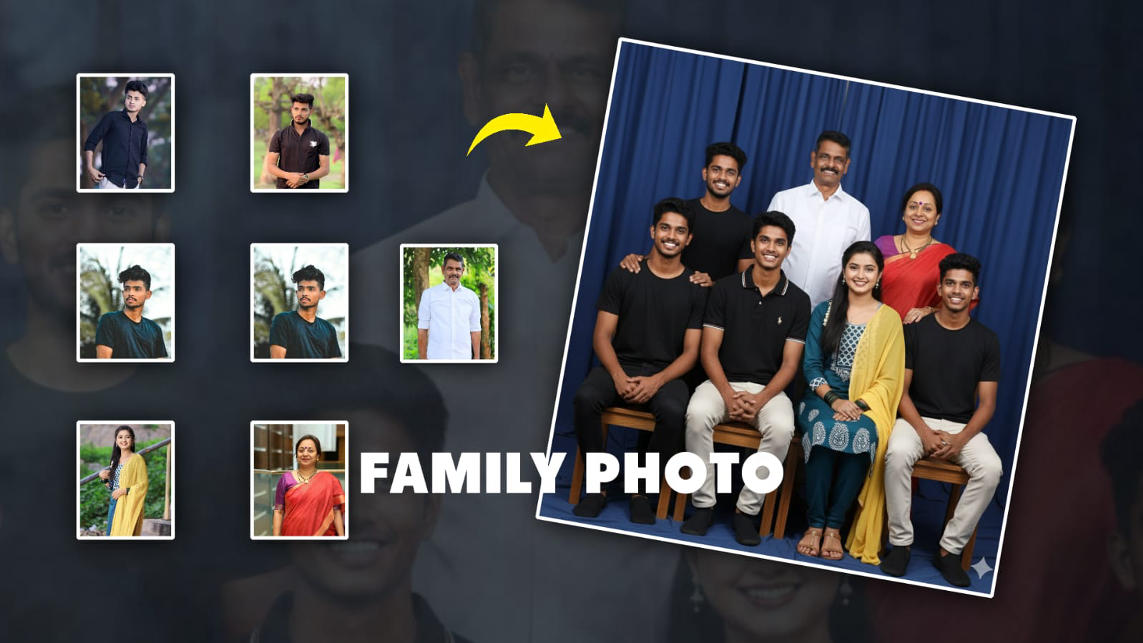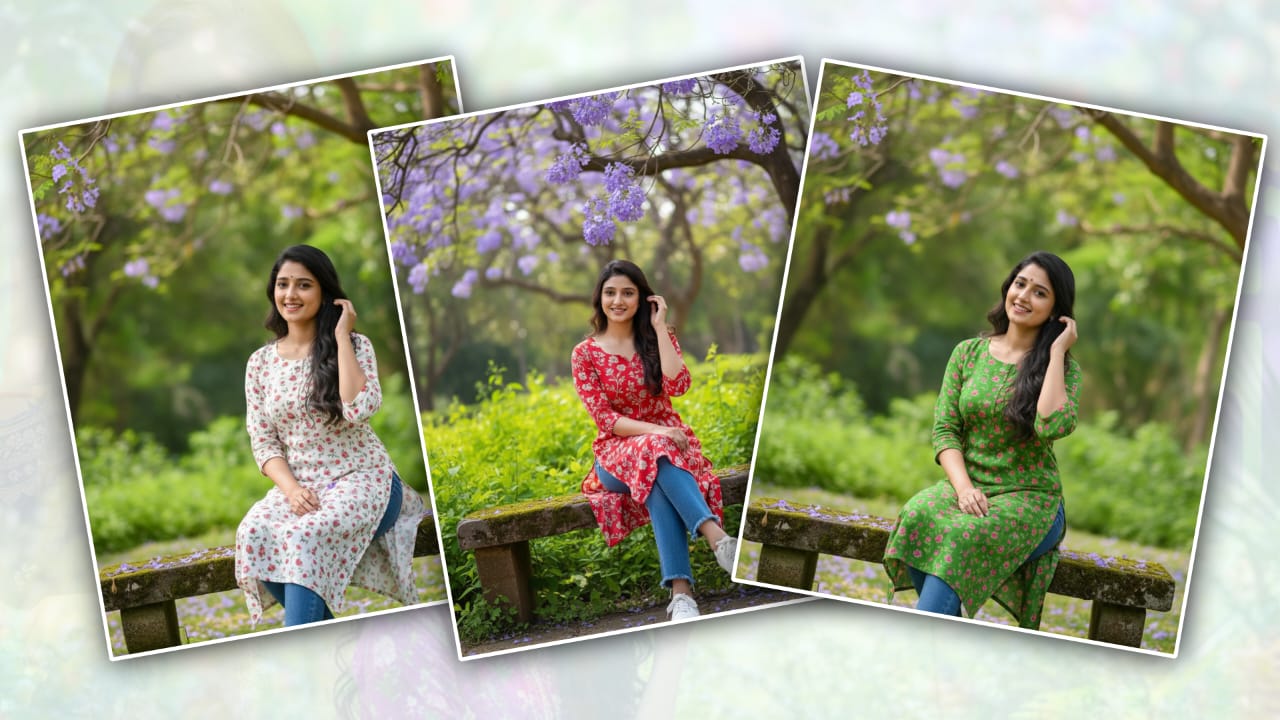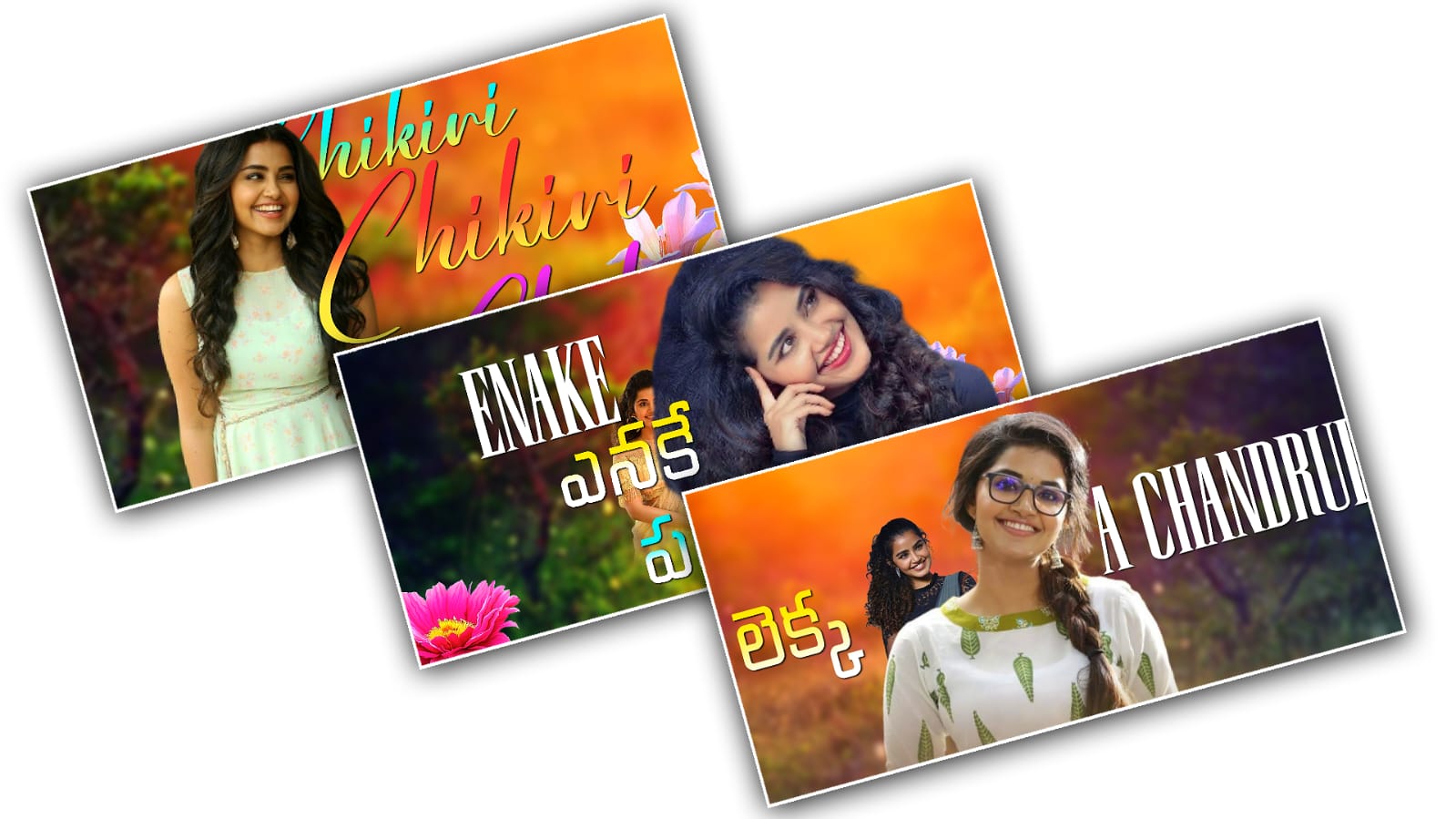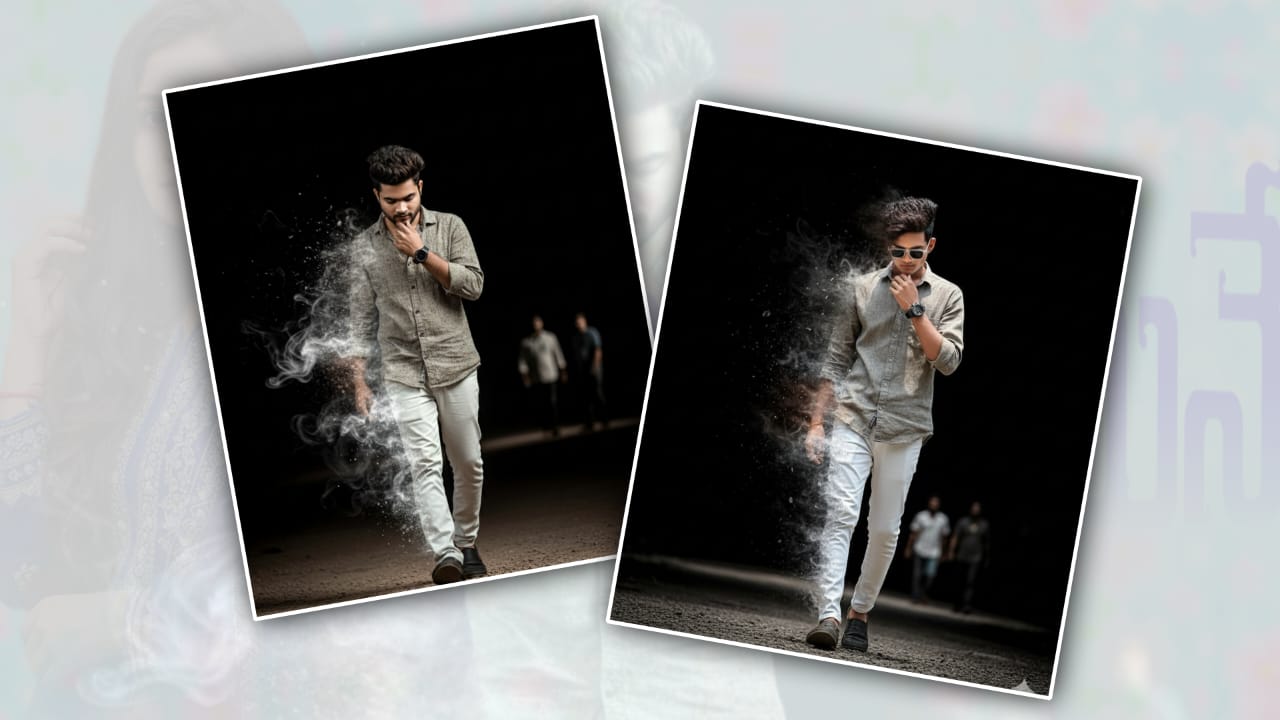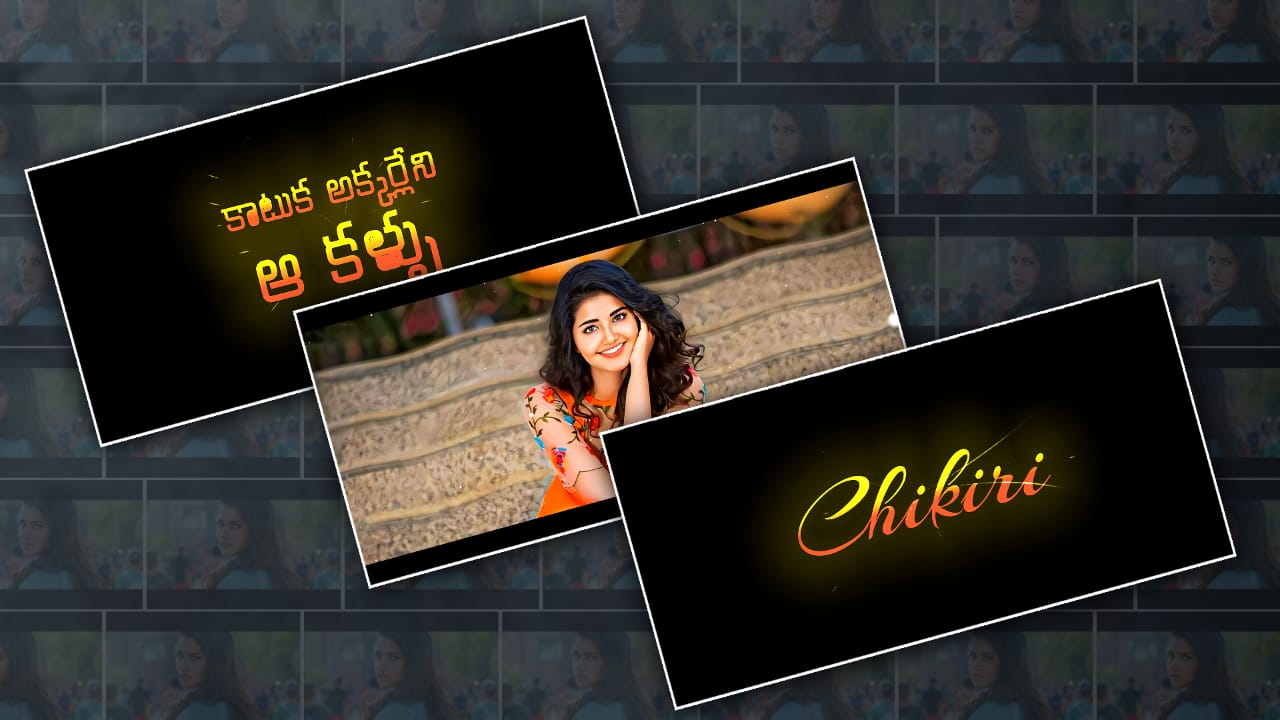Introduction
Family snapshots capture reminiscences, relationships, and moments in time. Yet in many present-day families and households, which might be geographically spread out, everybody is rarely bodily together to pose for one perfect family shot. Perhaps one sibling lives overseas, some other is visiting, and the rest are gathered for a holiday, but ignore the threat of a full family photo. The precise information is that these days, way to advances in synthetic intelligence (AI) and image-editing gear, you could take separate individual pix of each family member—or older snap shots taken at different instances—and remodel them into a unbroken, natural-looking institution image. In this article, we can explore how and why you would possibly want to do this, what the advantages are, what challenges you’ll face, and a way to go about the procedure step-with the aid of-step the usage of AI tools. We’ll also touch on inventive and ethical considerations in order that the quit result holds up as each an enduring memory and a visually appealing image.
The Changing Nature of the Family Photo
In decades beyond, a family photograph regularly meant gathering all of us in a single place, hiring a photographer, and taking many shots until everyone looked at the camera, the lights were turned on properly, and the moment turned into captured. Today, but families are extra dispersed, lives are busier, and the posh of orchestrating a perfect institution image is dwindling. Smartphones, social media, work journey, faraway residing, and the easy unpredictability of existence suggest that you may have dozens of character graphics, candid snaps of each family member, and not a single photograph wherein all are together. Rather than despairing, we can view this as an opportunity: through using photograph-editing technologies—in particular AI-powered ones—we can bring all t
How AI Has Transformed Photo Editing
Photo modifying was guide, time-consuming and reserved for specialists: choosing cut-outs, masking backgrounds, manually adjusting lighting, compositing photos, and colour-grading the result. But now, AI-powered equipment is increasingly more able to automate many of those responsibilities. For example, you could use AI to do away with backgrounds, align multiple pictures, healthy lights and shadows, advocate a unified scene, and even invent a realistic environment while desired. One device, for instance, allows you to upload individual pictures and then “create ideal group images” with AI handling lighting fixtures, shadows and perspective.
Supermaker.Ai
three
Pixelcut
three
Pippit
3
Research published on the subject of organisation-portrait enhancing (including the “GroupDiff” diffusion-primarily based gadget) suggests that AI can hold man or woman look fidelity while rearranging individuals in a new scene.
ArXiv
This technological shift manner that families not need to look forward to the perfect moment—they can take pictures one after the other (each time convenient) and later deliver them together genuinely into one significant photo.
The Benefits of Creating a Combined Family Group Photo
Why go through the effort of changing separate individual pix into one composite organisation image? There are several compelling reasons. First, it enables inclusion: someone who became absent from a holiday can nonetheless appear within the circle of relatives portrait, filling the visible gap and reinforcing relational bonds. Second, it offers innovative freedom: you can pick out when and how the photograph is taken, you can even fit clothing or lights throughout separate periods, which unify them right into a coherent composition. Third, for archival and legacy purposes, it ensures that the “family togetherness” photograph exists even.
Challenges and Considerations Before You Start
Of course, growing this sort of composite is not completely trivial. Several demanding situations ought to be considered. One is a version in lighting fixtures, shadows, and colouration tones: individual pixels might also have been taken in unique environments at distinctive times of day, and sewing them together can look unnatural if not treated cautiously. Another is perspective and scale: aligning individuals so they look like they had been present within the same scene, with regular size, viewpoint and posture. A 0.33 is a decision and picture first-class: one character’s photograph is probably high-quality, some other is probably blurry or poorly lit, which impacts the final output. A fourth attention is history mismatch and consistency: whether or not to region the people into a brand new unified background or try to healthy the present backgrounds. And subsequently, there are moral/relational components: you need to admire the needs of each person whose photo is used, make sure the composite is sincere (or surely labelled as composite if wished), and keep away from misrepresenting the instant in a way that may seem disingenuous to someone. By accounting for those troubles up front, you’ll have a smoother editing procedure and a better finished product.
Planning Your Composite Photo Session
Before you dive into AI editing, it can pay to plot a touch. Decide who may be covered, what poses all and sundry will adopt, what sort of surroundings or history you’d like for the very last composite, and how you’ll collect the person shots. You may additionally ask each family member to take a portrait (or several) with a simple or impartial history, preferably standing or seated in a similar orientation (e.g., dealing with the camera barely at an angle, no longer wildly varying poses). Encourage them to apply good lights—herbal mild is be
Collecting and Curating the Individual Images
Once you’ve deliberated, the next step is collecting the real photos. Ask every family member to add or ship their chosen photo(s). As the editor/curator, you need to evaluate every photograph for suitability: resolution (preferably high), clean lighting fixtures (faces nicely seen), minimum distractions (smooth heritage or one you can effortlessly isolate), and regular orientation (preferably all going through the camera in addition). If someone’s photo is simply too dim, blurry or strongly back-lit, you could request a retake or pick out a distinctive photo. You may additionally choose to crop or standardise the snapshots yourself to ensure consistency—perhaps making everyone roughly the same size in the body, cropping to a comparable aspect ratio, and so on. Having a folder where a majority of these images are accumulated simplifies the following step of processing them with an AI editing device.
Choosing the Right AI Editing Tool
There are many AI-powered photo-modifying platforms available today, and deciding on the right one makes a large difference. Some equipment concentrates on heritage removal and replacement, soon in compositing more than one person in a group image, some on shade-grading and lighting fixtures matching. For instance, one tool advertises the capability to combine separate people into a unbroken group image: add the photographs, describe the scene (“modern dwelling room circle of relatives portrait”, “lawn wedding style”), and the AI composes and generates the result.
Pixelcut
Other equipment consciousness on enabling unique lights and retouching of organisation pics (together with face alignment, expression refinement).
Pippit
Research suggests that today’s answers hold a man or woman’s appearance consistency while in the organisation.
ArXiv
When deciding on a tool, do not forget features consisting of: ease-of-use (good for non-professionals), co..
Setting Up the Canvas: Background and Scene Selection
Before you merge all people into one photo, decide on the scene or historical period for the composite. You would possibly pick out a realistic setting (dwelling room, lawn, seaside, park) or a stylised backdrop (studio white, vintage frame, vacation motif). The advantage of selecting one historical past in advance is that you could ask each person to in shape orientation, lighting fixtures direction, or even colour palette, consequently, making the final composite more harmonious. If the usage of a simple historical past for each person, the AI device can update the backgrounds individually and region all of them into the unified setting. Alternatively, if some human beings have current historical past elements which you like (for instance,e n family domestic wall), you can pick one of these and insert the relaxation into that place. Pay attention to attitude: decide from the point of view (slightly above, immediately on, eye-level) and horizon line so that all individuals appear in the identical spatial plane. Good practice: choose a historical past picture of respectable resolution, make certain the historical past lighting fixtures ambience kind of matches your person images (for example, noon sun, indoor smooth lighting fixtures), and don’t forget to include a subtle shadow under anyone for grounding.
Uploading and Preparing Your Images for AI
With your personas equipped and background chosen, it’s time to add them to the AI tool. If the tool permits, either drag all pictures into one project or create a folder and import them as a batch. Many gears will robotically come across faces, isolate them from the past, and align them. However, you could still want to manually confirm face detection and cropping, mainly if a person is wearing a hat, glasses, or is partially obscured. Next, make sure that every image is scaled appropriately.
Editing Individual Photos: Lighting, Colour, and Cropping
Before you merge the individuals, edit each picture to bring them closer in style to the final composite. Adjust brightness and contrast in order that faces are properly lit. If one photograph is underneath-uncovered or over-uncovered, correct that. Use colouration correction to suit white balance across all photographs—if one photo has a warm indoor tint and another has cold daylight, the mismatch could be evident after they’re merged. Some AI gear provides “automobile health colour” or “match lights” functions; if yours does, apply that. Oh, not, manually regulate colours and heat. Also, crop each picture so that anybody’s pose is similarly framed, for instance, chest upward, same horizontal centre. Some modifying of shadows and reflections can also help make them seem as though they permeate the entire surroundings down the road. The goal is to minimise differences among snapshots so that after they may be added collectively, no person sticks out as “photo-shopped”.
Compositing Individuals into the Group Scene
Now comes the fun component: combining the character snapshots into your institution. In your AI device or enhancing software program, area the history on the bottom layer, then region everybody on their own layer or import in my opinion if the AI tool lets in. Arrange their positions to simulate a natural institution photo: some seated, a few standing, a few angled, barely relying on your idea. Pay attention to scale (human beings inside the returned row ought to be barely smaller or dwindled in size to simulate depth). Check spacing: leave sufficient room among individuals in order that they don’t overlap weirdly, and make certain you don’t area a person floating or overly isolated. Once placed, run the AI or blending function that merges lighting fixtures, shadows and colour across the composite. Many mo
Refining the Composite: Blending, Shadows and Depth
Even with AI help, the human eye alternatives up inconsistencies without difficulty. To refine the composition, in addition, practice diffused blending techniques. Add ambient shadow underneateverdiscerniblern so they seem grounded. If the heritage has a floor course or floor texture, ensure that the toes of all people align with that texture in place of floating. Adjust international lighting fixtures: for instance, lessen highlights barely, elevate mid-tones, and make sure pores and skin tones throughout people are comparable. If the scene has directional mild (e.g.G., left facet light), ensure absolutely everyone has a steady mild source. You may want to feature a slight shadow or spotlight mask for some people. If intensity of discipline is supposed (for example,e human then n returned row barely blurred), observe a mild blur impact on those layers to simulate camera cognisance. Colour-grade the entire composite as one picture rather than many separate elements: practice a diffused worldwide clear out or LUT (appearance-up table) so that each part of the picture “sense” cohesive. Finally, zoom out and examine: does the image appear like a single second captured, or a collage of separate images? The former is your goal. Make minor tweaks until the image “reads” as one.
Exporting and Using Your Final Image
Once happy with the composite, it’s time to export. Choose an excessive decision on output (preferably 3000 pixels or greater wide if you plan to print). Export in a lossless or fantastic JPEG/PNG format. Save a layered version (as an instance PSD) if you expect destiny edits or additions (for example new family member later). Once exported, you may print the image on canvas or photo paper for framing, include it in virtual vacation cards, set it as computer wallpaper, or share it on social media. If you’re printing, check for
Tips for Best Results and Common Mistakes to Avoid
To maximise nice and keep away from pitfalls, right here are some beneficial pointers. Shoot or use individual photographs in appropriate lighting and with neutral backgrounds, where viable. Avoid busy backgrounds in the back of person subjects until you’re cushty overlaying them out. Try to suit the orientation and pose across people so that once merged, it seems great. Pay attention to scale: if one person is much larger within the body, the composite will look off. When positioning in the final scene, remember herbal interactions: moderate angles toward the centre, small overlaps or interactions (a person’s hand on the shoulder of every other) give an extra actual family feel. Avoid unnatural shadows, inconsistent lights, or unrealistic size differences. Don’t over-use heavy artificial backgrounds until it’s your intention, for instance, a stylised excursion card. Avoid ignoring consent: permit anybody to approve their character photograph being used in the composite and how it will be shared. And in the end, when exporting, maintain an original document locked away so that you can revisit or update it later (instance, to add a new family member, or update later).
Creative and Emotional Value of the Composite Image
Beyond the technical steps, it’s reflecting on the creative and emotional feel of what you’re creating. A composite family photo borne of separate individual photographs is greater than just an edited picture—it represents harmony across time and distance. It tells a story of a circle of relatives that may not usually be physically together, but chooses to create a shared visual memory. This can make the photograph in particular poignant: grandparents seeing grandchildren in one frame, siblings residing some distance apart still performing aspect-by-aspect, the memory of a circle of relatives holiday preserved. Ed.
When to Update or Recreate Your Composite
Just like conventional family pics, your composite might also benefit from being updated every few years. Life adjustments—new babies, grown kids, adjustments in appearance, new family members, even pets. By updating your composite periodically, you maintain an evolving family tale. You may revisit the undertaking whenever there’s a main milestone: a wedding, a reunion, a new addition to the circle of relatives, o or without doubt, but a choice to refresh the picture fashion. Because you’ve preserved the layered document and original people, incremental updates are possible (including one character in preference to rebuilding everything). One benefit of the digital-AI workflow is this pliability—in contrast to conventional photo shoots, where you’d need to gather all and sundry again. So consider scheduling replacement every few years to maintain the circle of relatives togetherness “visually, even though in reality, the distance persists.
Ethical and Authenticity Considerations
In the use of AI to create a “collectively” image when human beings weren’t bodily together, it’s well worth considering authenticity. The finished photograph may look ideal, however, a part of the price in a candid circle of relatives photograph is the imperfection—a person blinking, all of us laughing, the instant of spontaneity. If you create a composite that looks overly staged or synthetic, it may feel less sincere. Consider whether you want to label the photograph as a “composite” whilst sharing broadly, mainly if others (out of doors the own family) may assume it was physically created in a single shot. Also, recognise privacy and consent: ensure everybody (or their guardiconsentststto to how their photo is used, saved, and shared. Avoid misrepresenting the moment or implying falsehoods (for example, claiming all people changed into bodily gifts after they weren’t). A little transparency goes a long way.
Case Example: How One Family Did It
To illustrate how this works in practice, consider the Sharma family. They stay in New Delhi, two siblings stay overseas, and the grandparents stay elsewhere in India. They decided they wanted a “Family of Six Together” photo despite the fact that they were scattered. They planned: all of us might take a photograph wearing a mild blue shirt in a neutral indoor place with natural woodland. Each dispatches their photo at high resolution. The editor collected the pics, cropped them to uniform height, used an AI tool to cast off every heritage, and selected a historical past image in their own family home living room. Then she organised siblings seated in front, two standing behind, grandparents seated at either facet, scaled them to attitude, brought diffused shadows, matched the lights course (window light from left side), colouration-graded for coherence, and exported the final 6000-pixel-wide photo. The result changed into a print-worthy picture that appeared like a studio circle of relatives portrait; however, the fact turnoutnto that they were in six different places. The circle of relatives published it, framed it, and gave it to the grandparents as a gift. The emotional impact becomes extra due to the fact that the image symbolised solidarity despite distance.
Future Trends in AI Family Photo Creation
Looking ahead, the gear will simply get more powerful. Research like the “GroupDiff” system indicates AI will permit even extra flexible institution edits: adding or eliminating people, adjusting expressions, seamlessly mixing poses and gestures—all whilst preserving character likeness.
ArXiv
We will, in all likelihood, see AI tools that routinely recognise the pleasant man or woman frames (for instance, merging a couple of takes into one perfect shot), improve shadow reflections automatically, and let non-professionals produce professional-level composites..
Final Thoughts
Creating a compositional image from separate man or woman photographs, the use of Aissan is an effective way to seize circle of relatives togetherness, while gathering a family isn’t always possible. With planning, exact picture-taking, the right AI device, and careful enhancing, you may produce a polished, meaningful photo that resonates emotionally and aesthetically. It is both a technical method and a creative endeavour—and when done properly, it outcomes in a legacy piece that family members will cherish. The destiny of own family pictures isn’t pretty much being in the same place at the same time—it’s about bringing together those locations and instances into one lasting visual memory. Embrace the opportunities, appreciate the authenticity, and revel in the process of making your separate pictures into one circle of relatives story.
Prompt
Generate a realistic South Indian family group photo and send u above all the members. Use the same outfits from the uploaded photos. Place younger members in the front and older members (like parents) behind them. One elder can gently place their hand on the younger’s shoulder. Set the scene in a traditional photo studio with soft lighting and a curtain or plain background. Everyone should be smiling and looking at the camera. Keep the style authentic, respectful, and culturally South Indian. Keep original faces 100% accurate. I uploaded photos.
